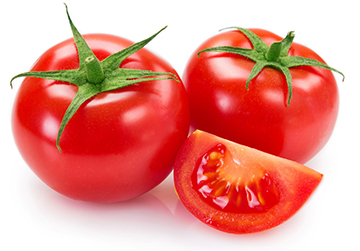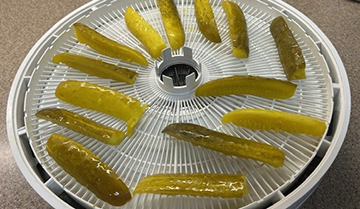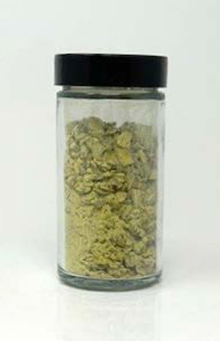
Questions and Answers About Tomatoes
 “Tomato mania” occurred in the mid-1800s when Americans began growing them widely in home gardens. Today, tomatoes are second only to potatoes in popularity in the U.S. Most of us eat at least 21 pounds of tomatoes per year.
“Tomato mania” occurred in the mid-1800s when Americans began growing them widely in home gardens. Today, tomatoes are second only to potatoes in popularity in the U.S. Most of us eat at least 21 pounds of tomatoes per year.
Have you grown tomatoes in a pot on a step or patio, or in an in-ground garden? Growing tomatoes can be quite rewarding because of their versatility on menus, their nutritional properties and our ability to preserve them in different ways. Here are a few common questions we in Extension often receive.
What is the difference between “determinate” and “indeterminate” tomatoes?
Determinate tomatoes or “bush tomatoes” (such as Roma) produce all their same-sized fruit at the same time. Be ready to preserve these varieties when they ripen. Indeterminate tomatoes (such as Big Boy and Better Boy) grow continually produce fruit throughout the season, so you can have a steady supply. For more information about tomatoes, contact your horticulture agent in a nearby Extension office.
I am growing heirloom tomatoes. I heard they are more acidic. Do I still need to add lemon juice or citric acid when I can them?
Yes, all tomato varieties should have added acid for safe canning in a boiling water bath canner. Tomatoes can vary in acidity based on growing conditions and location. The current recommendation for acidification is 2 tablespoons of bottled lemon juice or ½ teaspoon of citric acid per quart.
- You do not, however, need to add acid to tomatoes if you freeze them.
My family loves salsa and I have a recipe they love. I would like to can it. What processing time should I use?
Family favorites can be frozen. We in Extension recommend using research-tested recipes.
Try canning “Choice Salsa” from the National Center for Home Food Preservation as a way to personalize your preferences. See their website for details.
See the food preservation resources from 12 Midwestern states on the NCFSEN website at North Central Food Safety Extension Network
Dehydrating Pickles
 Dehydrated dill pickles can be a fun snack, a tasty condiment for sandwiches, fries and dips, or a seasoning for popcorn and salads. Powdered pickles can be used to season breading for chicken, fish and vegetables. They are simple to prepare and will last a while with proper storage.
Dehydrated dill pickles can be a fun snack, a tasty condiment for sandwiches, fries and dips, or a seasoning for popcorn and salads. Powdered pickles can be used to season breading for chicken, fish and vegetables. They are simple to prepare and will last a while with proper storage.
Start by draining your pickles and patting them dry. Dill pickle chips dehydrate the best, while spears can take 24 hours or more and are hard to pulverize in a food processor. Cut spears into smaller pieces for faster drying. Arrange pickles in a single layer on dehydrator racks. Do not overlap. Dehydrate at 140° F.
Dehydrate until pickles are completely dry and crisp. Chips take about 6-8 hours and spears up to 24 hours to dehydrate. Check periodically for doneness. The humidity in your home environment will play a role in the amount of time it takes to dehydrate foods. Low humidity areas will take about half the time compared to a high humidity area.
Let pickles cool, then grind them into a powder using a spice grinder or food processor. You can also leave the chips whole and consume as snacks. Store in an airtight container for up to 2 months. Glass spice jars with tight-fitting lids are an excellent option for storing pulverized dried pickle chips.
References: Dried Pickle Powder
